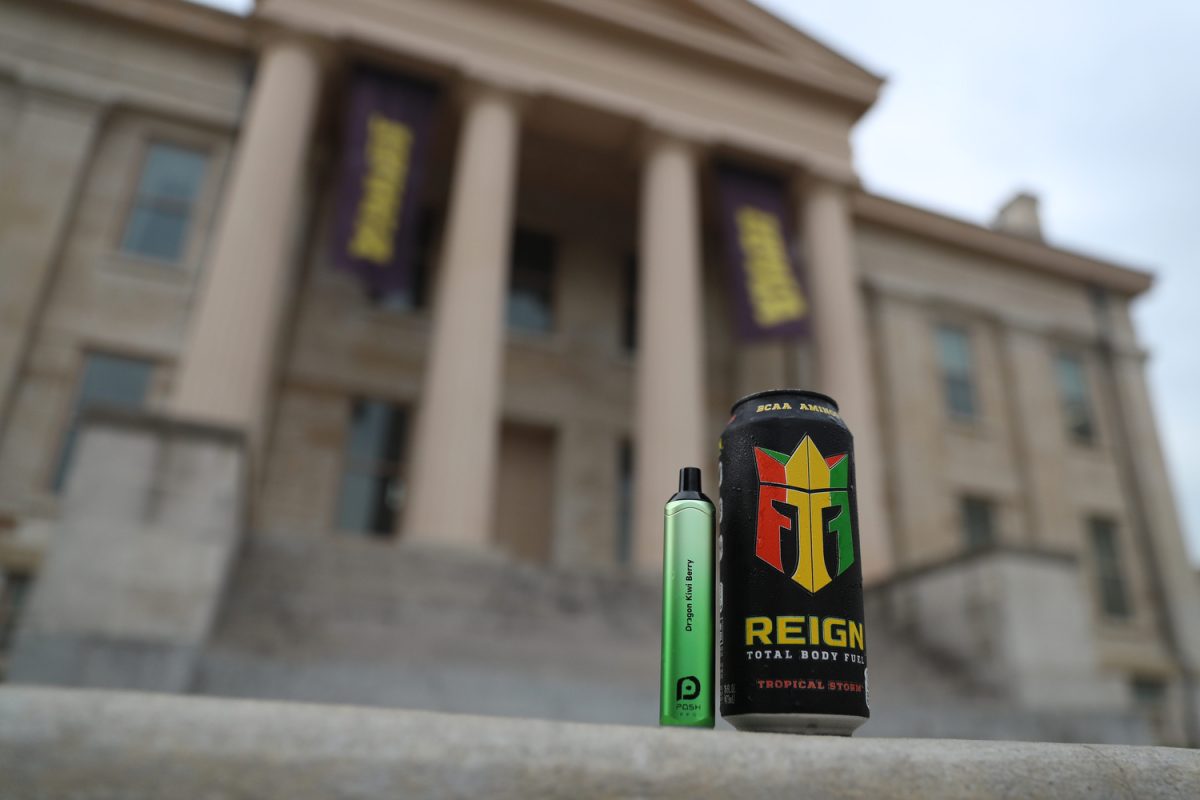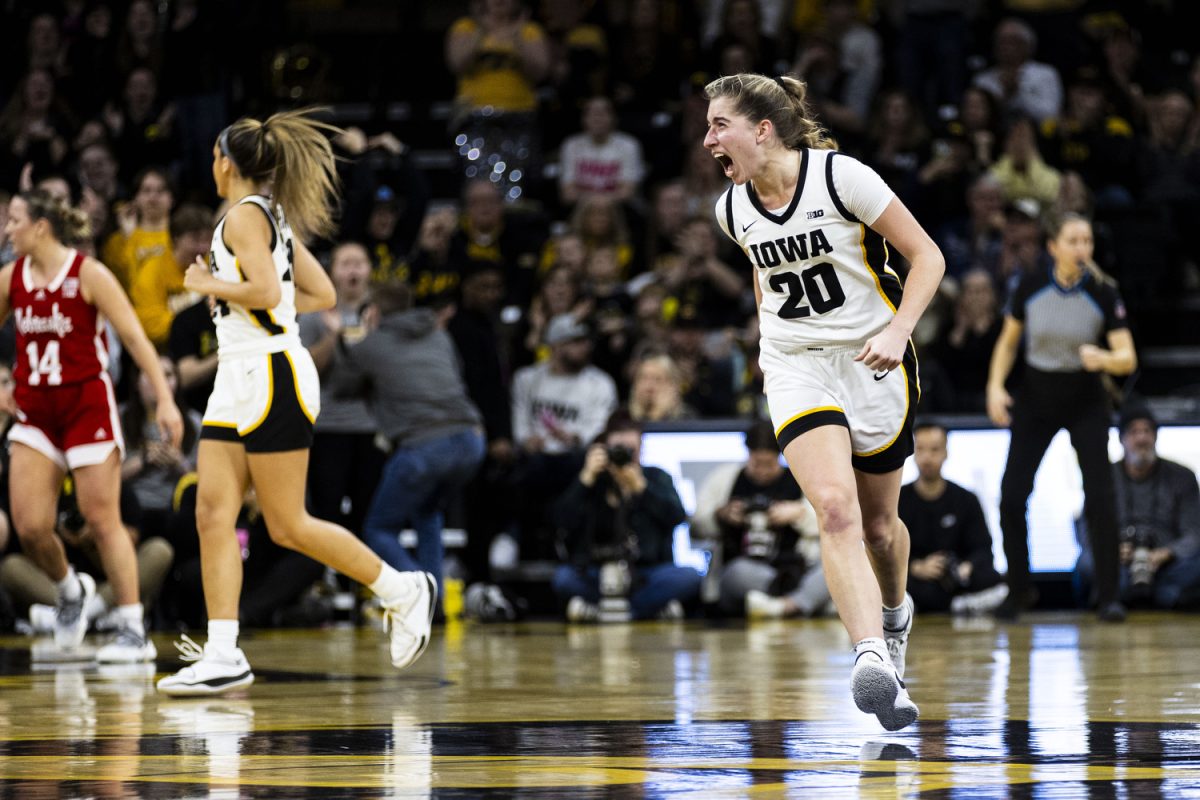University of Iowa student usage of electronic cigarettes, vapes, and the consumption of energy drinks has increased significantly.
In a 2023 survey, 26 percent of undergraduate students reported using a vape in the last three months, Trisha Welter, the associate director of Student Wellness at the University of Iowa, said.
UI Student Wellness has conducted the National College Health Assessment survey every other year since 2013.
In the same survey in 2019, about 27 percent of undergraduate students reported vaping in the last 30 days, a higher number than the three-month results.
The long-term effects of vape usage can be incredibly detrimental and include nicotine addiction and stunted development of the brain, Welter said.
“A lot of times people think [vapes] are safer and that they don’t contain nicotine, but a CDC study showed that 99 percent of e-cigarettes sold contain nicotine,” Welter said. “Some of them don’t even disclose that they contain nicotine.”
Additionally, it can change the way brain synapses are formed and can set students up for long-term side effects.
Shannon Lea Watkins, UI assistant professor of Community and Behavioral Health in the College of Public Health, said many young people who she has seen reported discomfort in their lungs, throat, and mouth.
Additionally, athletic performance and mental health can be greatly affected by vaping.
“That’s one of the sneakiest things about vaping and nicotine addiction is that there is an impression that vaping can relieve anxiety,” Watkins said.
On the contrary, it is the nicotine addiction itself that has increased those feelings of withdrawal and that need for vaping, not the relief of the anxiety, Watkins said.
Vaping has also been equated with peer pressure, Watkins said. If a student were to vape for the first time, they are likely to do it again, especially if that is what their friends are doing, said Watkins.
Watkins and her team of student researchers are currently working to understand how e-cigarettes and energy drink consumption are portrayed on social media.
Focused primarily on TikTok, they are especially interested in how the products are portrayed by content creators within the LGBTQ+ community.
“We know that social media is a huge influence in the lives of young folks and so we’re really interested in finding how vaping and energy drink consumption is portrayed online," Watkins said.
Research on vaping
Eric Garcia, a UI research associate at the university, alongside Alejandro Comellas, is also conducting a study on electronic nicotine delivery systems, or ENDS.
Their primary hypothesis is that people who use vapes experience changes in their lung tissue and function that can be linked to lung inflammation, renal blood vessel problems, and potential heart issues compared to people who have never smoked before.
The study itself entails a series of pulmonary function tests, a CT scan of the participant’s lungs, and the administration of a drug called sildenafil.
After participants receive a scan and go through the tests, they are administered a dose of sildenafil and will then repeat the CT scan and lung function tests, Garcia said.
Sildenafil is a Food and Drug Administration-approved drug that is used for pulmonary hypertension and is more commonly known as Viagra.
Later, the participants will come back in for a cardiac MRI with a 3D-printed Juul pod. The Juul pod is meant to mimic the use of a vape but only contains water vapor without nicotine. Participants go through the action of inhaling and exhaling, as they would with a vape.
The study currently has nine participants and is looking to get a total of 36 participants.
RELATED: In an effort to quit smoking, cigarette users turn to vaping as a solution
This second phase of testing takes roughly six hours to conduct. The researchers are already starting to see promising results, Garcia said.
Participants are scared to come forward and be a part of these types of studies, Garcia said.
This study uses their own research scanner with very minimal radiation compared to that of the main hospital.
Welter encourages students who vape and are trying to quit to reach out for help. Additionally, those who wish to cut back on their caffeine consumption or aid in other nutritional aspects of their life reach out as well.
The Student Wellness Center provides an e-cigarette and tobacco support group, in which students meet one-on-one with a health educator for those who want to quit, cut back, or explore the idea of ultimately stopping vaping altogether.
It is a free service, and students can schedule in-person or Zoom appointments.
Energy drink usage also increases
Energy drink consumption is fairly common in the student population as well Welter said.
Based on the National College Health Assessment conducted every other spring, 40 percent of undergraduate students reported having an energy drink at least once in the last month, Welter said.
The study shows that 21 percent of students reported having had them five or more days in the last months:
- Twenty-five percent of graduate and professional students reported having an energy drink in the last month.
- Twelve percent of students reported consuming an energy drink five or more days in the last month.
“That is a big chunk of our student population,” Welter said. “The biggest impact these drinks are having on students is sleep. This can rally impact the student’s ability to fall asleep or stay asleep, affecting the duration of their sleep and sleep quality.”
Welter said most energy drinks contain 100 to 300 milligrams of caffeine, whereas a cup of coffee is just under 100 milligrams.
“Energy drink consumption has pretty wide-ranging effects such as [students] mood, mental health, and academic performance,” Welter said.
















